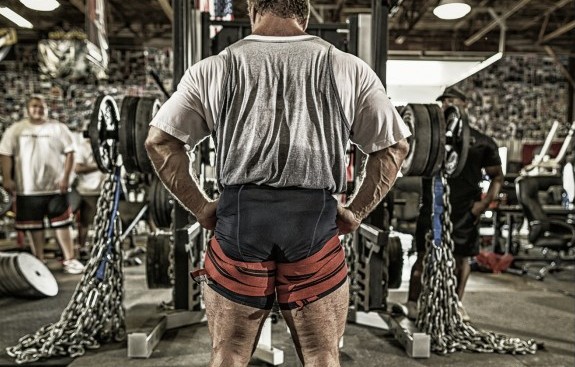
Four factors to staying tight every lifter should know.
GETTING TIGHT
The first thing you need to understand is when lifting big weights, or light weights for that matter, being tight is extremely important. The tighter that you can keep your body, the safer you're going to be, the stronger you're going to be, and the more beneficial it's going to be because you're going to be able to lift more weights. The transfer of power from the floor to the bar through your body is going to increase. When that is not tight and it's loose, you're going to lose the ability to transfer the power.
I once read this illustrated ... In the torso of ... Visually picturing what a lifter would look like if they were trying to squat or dead lift, and instead of having abdominal muscles in their torso it's just a marshmallow. What would happen when they went to flex their feet in the floor to squat the weight up? They lose all tightness and the marshmallow would compress. Same thing with the dead lift. Now, if you remove that marshmallow, and replaced it with a rock, that transfer of power is now going to go all the way through to the bar. That's a quick, easy way to understand why one should stay tight in the lifts that they do.
The four factors that I'm going to present apply to every lift, and as I'm writing this I'm trying to think of any lift outside of the three main power lifts that this wouldn't apply to. I can't really think of any lift at all that these don't apply. The only ones that I can think that it wouldn't apply to, would be the hands with certain body building movements. That's it. For the purpose of this article we're going to stick with the squat, bench, and dead lift, and use that as the frame of reference.
Here we go...
HEAD POSITION
The key to tightness is going to come from your head, your hands, your torso and your feet. With head position, you don't want to look all the way up to the ceiling. You don't want to look all the way down to the floor. You want to have your head in a slightly tilted up position and then, driven back. The best way that I've heard this explained was when Steve Goggins was trying to explain the importance of head position on the dead lift to Meana Franco when she was out for her mock meet a month or so again.
The way that he explained it to her was, "Picture you have a softball or a Nerf ball in your neck, between your chest and your chin." That's about the position you want to be in and you don't want to let that position change throughout the movement, so your neck can stay at a fairly neutral position. You do want to drive and pull your chin back, so that it's straight. That begins to activate the torso, your neck, and your spine as well. It keeps you in a tight position. As soon as you begin to look down, you're going to round over. As soon as you begin to look up to the floor, you're going to begin to fall backwards. So the key is keeping that head position where it's suppose to be.
You also do not want to turn your head from side to side, or for that matter, even look from side to side. Many times I've seen ... If you're coaching a lifter and you're standing off to the side, when you're teaching and giving them their verbal cues if they turn their head to look at you. First thing that tells you is that they're a visual learner, so no matter what you say isn't going to sink in as much as if you were to film them and let them see what they need to do. Or show them what they need to do. If that's the case, and you don't have any other choice. You need to stand in front of them, or get behind them, so they're not in a position where they're going to turn their head to be able to look to see what you're saying.
I've also seen people look toward their weak arm in a bench press if they're starting to stall out while they're pressing. It's one of the worst things that you could do. Keep your head in that same position, the position that I talked about with that Nerf ball. That's going to apply to the squat, the bench press, and the dead lift. Each one of these things that I'm going to talk about applies the same to each one of those lifts. Head in a nice neutral position driving back into the neck.
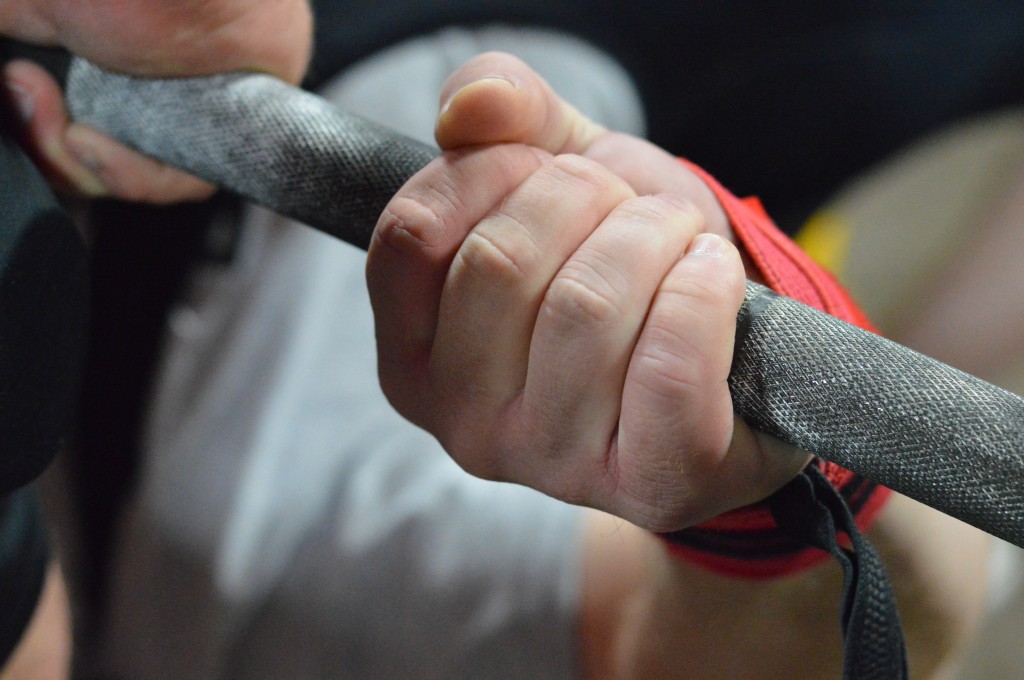
HAND POSITION
Whenever you do any of the lifts, especially the three main lifts, obviously you want to make sure that your hands are even. We don't want to take anything for granted and assume that they are. You always want to make sure to take the time to check that your hands are even. If you have an injury, for example I do have a shoulder injury, so I many times will grab the bar about one finger off. Whoever I'm training with will grab my hand and move it. This happens even with me using my thumb, lining up at the smooth, and making sure that my grip is correct first. Sometime, before I take the bar out of the rack and begin the lift, I make that slight correction where it throws the hand off a little bit and it needs to be put back. Most people aren't going to have that problem.
What I'm mainly writing about with this is grabbing the bar and squeezing the shit out of it. That's going to reinforce, in your mind, being tight. The tighter you grab the bar, the tighter your arms are going to be. It's also going to reinforce that you need to make everything else tighter in your body as well. I'm not just talking about grabbing the bar and squeezing. I'm talking about grabbing the bar and digging that bar between your thumb and forefinger as hard as you can. Then wrapping the rest of your fingers around the bar and squeezing the shit out of it. That's the tightness that I'm talking about. That should be the same in the squat, the bench press, and the dead lift. Before you initiate any of those lifts, the grip has to be as tight as you can possibly make it.
If you need to use wrist wraps to reinforce the tightness of that grip, then do so. That's one of the reasons why wrist wraps are used.
TORSO POSITION
With your torso, your core, your abs, your lower back, your however anybody wants to explain this and in any way anybody does to explain it. Everybody is pretty much saying the same thing, you need to be able to pull air into your diaphragm, and contract and flex the muscles of your abdominal ... Lower back ... You want everything tight. Obliques, spinal erector, rectus abdominis, everything in your torso. You want all that air to be bracing your torso as tight as you possibly can. The easiest way I've found to be able to teach this, is to have somebody look into a mirror and take a deep breath. If they see their shoulders rise, then they're breathing into their chest. They need to learn to breathe more into their belly. When they can breathe into their belly without the shoulders rising then they're pulling the air where it needs to be.
From that position they want be able to flex all the muscles around the torso. The easiest I found to teach that as well is to have them put a belt on one notch loose. Then have them pull the air into the torso and try to break the belt off. Not just from the front, from the sides. I will put my finger ... My thumb in the belt and try to have him squeeze my thumb as hard as they can from the front, from the side, from way back into the sides as well.
I know how to stick behind the lower back, because from my experience while they do want to extend and expend the whole entire torso. When I starting having and putting my hands into the lower back, rounding and a lot of other things start to happen. Most people when you're first teaching this do not understand the concept of being able to pull that much air into their torso, and there's other exercises that they could do to be able to teach that. For now the key is just to understand that you need to keep your torso as physically tight as you possibly can.
Also, understand with this, and I spoke about this in one of my table talk videos that I did early or later last year; There's a lot of coaches basically explaining the same thing that has to deal with the torso. If you don't understand what one coach is saying, listen to another coach and how they explain it. If you don't understand, go to another one. Everybody has got different cues, everybody has got different exercises, and different movements that they're using to try accomplish the same thing. If you're not getting it after a couple weeks of working or trying what one person says, move on to what somebody else has written about or another video that somebody else has put out, and try that. There is enough content out there now that you're going to figure it out if you try enough. If you're not figuring it out with the way one person is trying to present it, you need to understand the verbal cues that that person has. That person has established has come from all the people that they have worked with over the period of their career. They're going with what they know best, it doesn't necessarily mean that they've worked with people that are in the same position that you're in while somebody else very well could have. So their verbal cues are going to be better for you.
FOOT POSITION
Foot position, regardless of close, narrow or wide. What you do with your feet also impacts how tight you're going to be during the lift. If you're just standing on the floor or lying on the bench, you're not really connected to the ground. I like to explain that when you're lifting these weights you want to try to become one with the bar. You want that transfer of force to be going from the earth, to the bar. That's going to go from the feet up. Once again, there is a lot of different cuing that goes on.
Personally I like to try to push and try to slide the floor apart, like I'm trying to spread the earth or trying spread the rubber mats or platform or whatever I'm standing on. Other people like to try to corkscrew the foot out. Other people like to explain that you should try to drive your toes and heels into the floor. The key thing to understand is you want your feet positioned in a way that you are not going to move, that you are locked into the ground in such a way that nothing is going to move them. Whatever works for you, whatever cuing works for you, stay with.
When you look at these points and your feet are tight, and ripping and grabbing the floor, your torso is tight so there is the transfer of power is going to go through the bar. Stable. Your hands are tight and your head is in the right position. Now you're going to have total body tightness before we even talk about shoulder blades and all ... There's so many other cues that can go out there. These are the four big ones, these are the ones that you need to master before you start looking at all the finer tuning. Pull the bar apart, and do all this fancy cuing shit. If you don't understand this, you don't have that base tightness that you need to be able to lift the weights in the first place.
TAKE AWAY
I really didn't understand how this applied to every exercise until I sat down and started to write this, but when you think of simple exercises; curls. It's the same thing. If it's a standing barbell curl, your feet need to be locked in, your head needs to be in the right position, the torso needs to be tight. Everything needs to be tight. If these points of contact are not tight and in position, even with your accessory exercises, you're going to run the risk of getting hurt. Especially when you're lifting maximum weight or your training with a little bit looser form to impasse failure. It makes sense, and it's good practice. You're going to make better progress if you take the time to learn how to get your body tight, before you perform the major lifts as well as all your supplementary and accessory exercises.
---









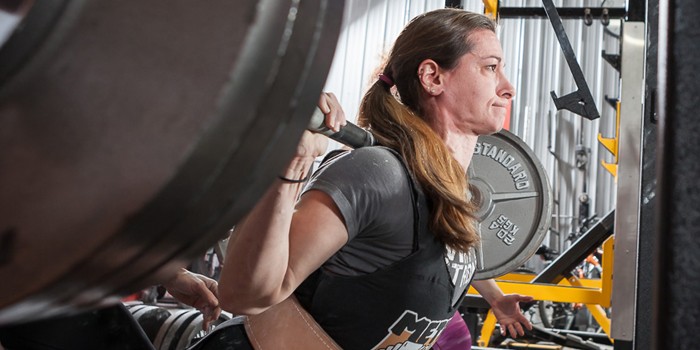
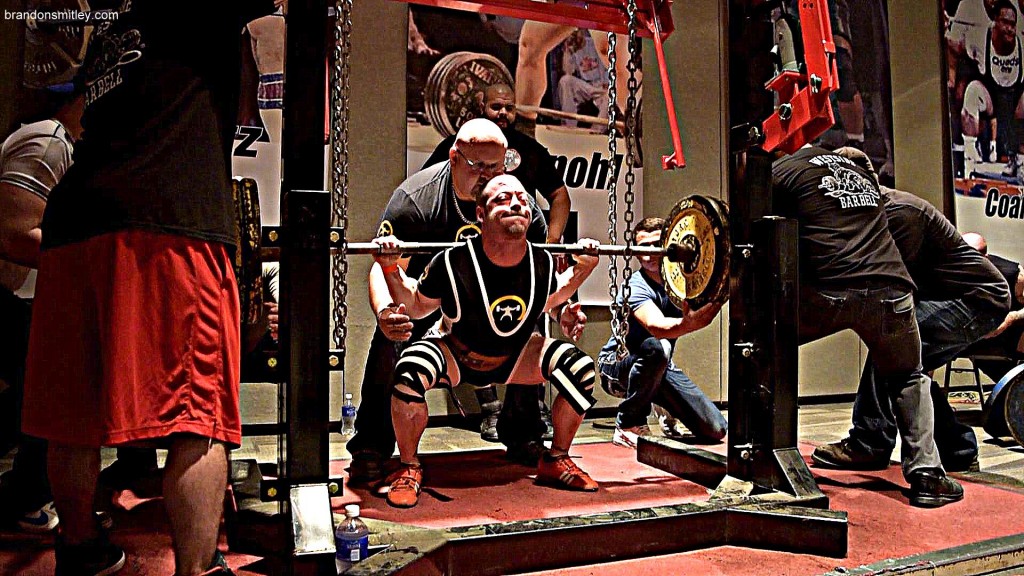
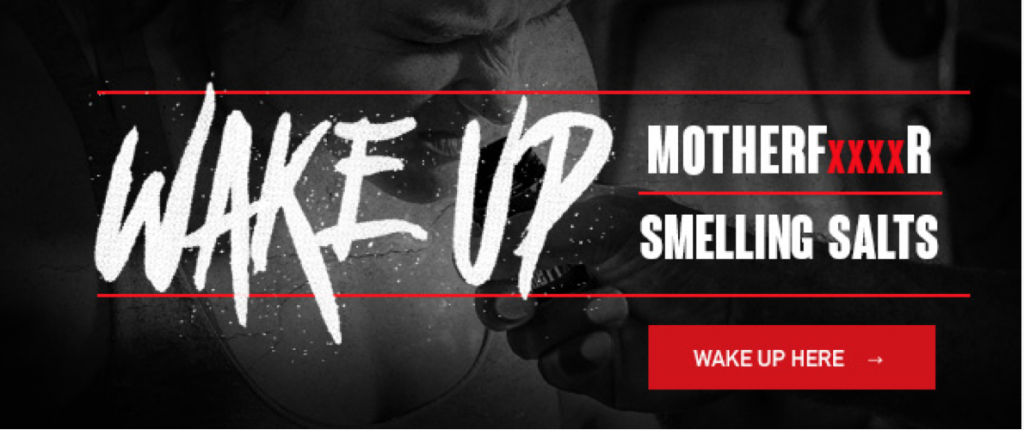
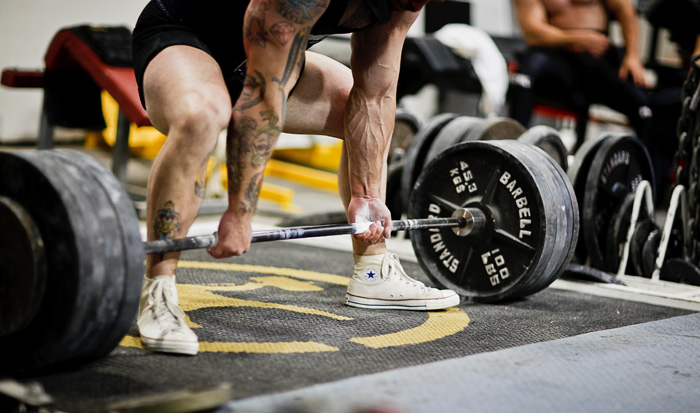
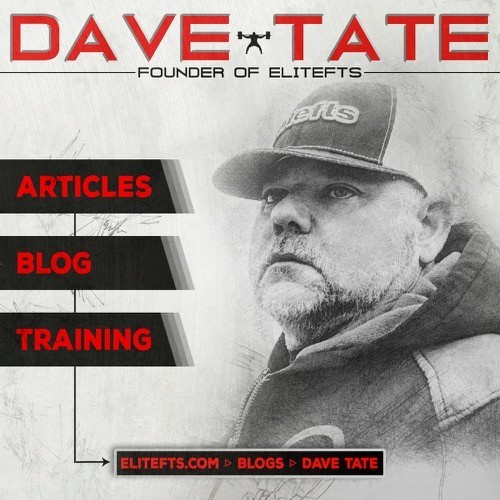
3 Comments